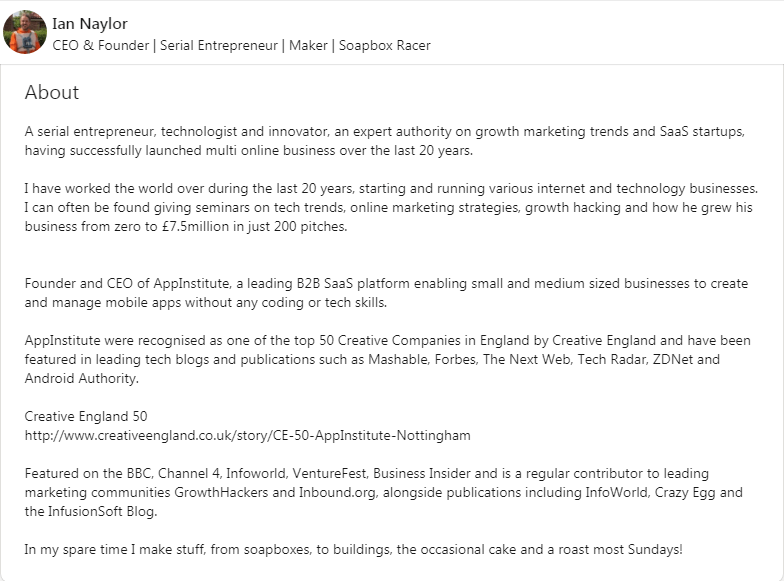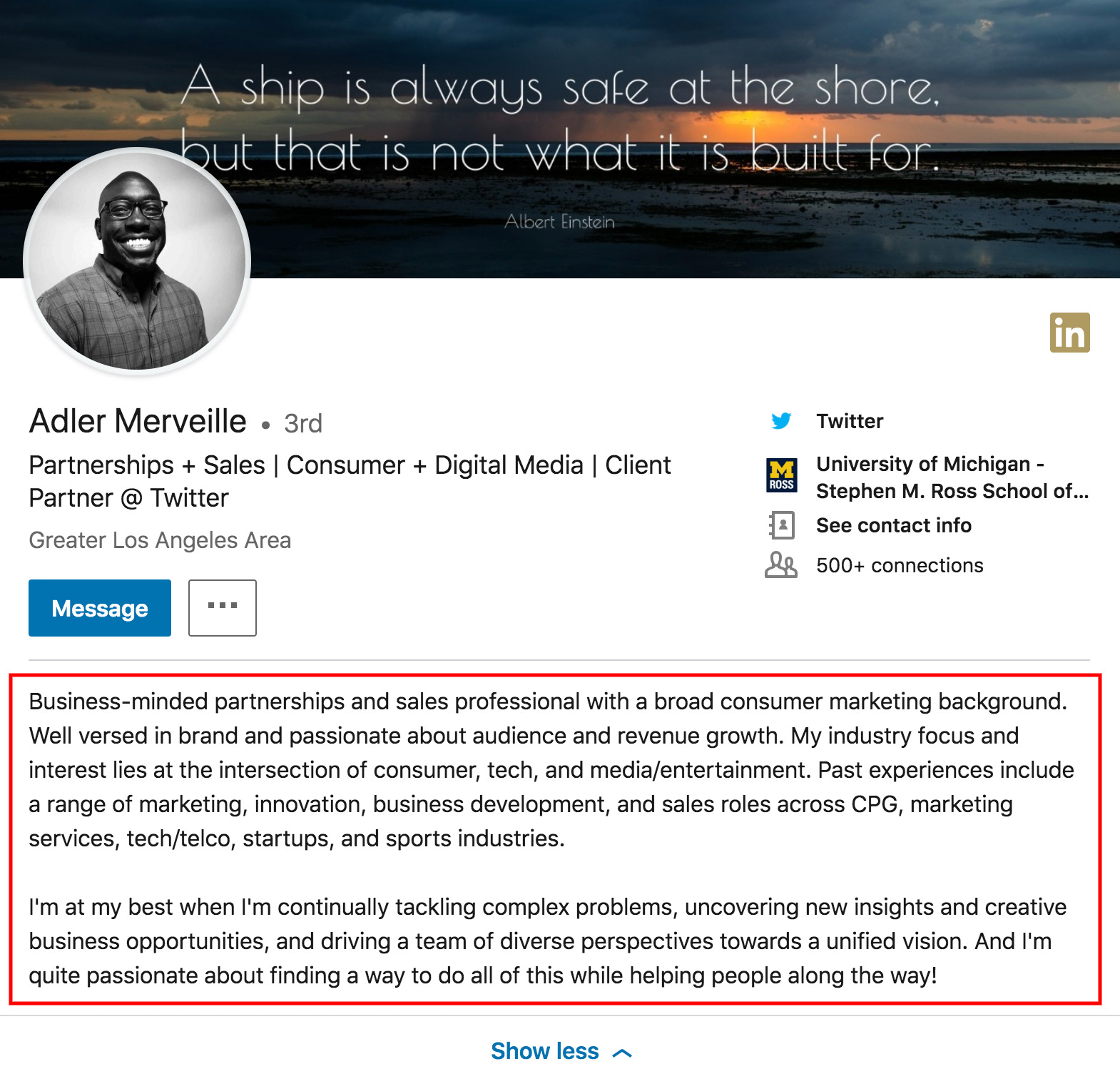

- #LINKEDIN SUMMARY EXAMPLES FOR FINANCE STUDENTS HOW TO#
- #LINKEDIN SUMMARY EXAMPLES FOR FINANCE STUDENTS PROFESSIONAL#
#LINKEDIN SUMMARY EXAMPLES FOR FINANCE STUDENTS PROFESSIONAL#
Specialties include job search strategy, career coaching, professional branding, resume writing, recruiting, LinkedIn makeovers, corporate outplacement, public speaking, on-camera tutorials, and social media marketing.
#LINKEDIN SUMMARY EXAMPLES FOR FINANCE STUDENTS HOW TO#
In fact, a big part of my job is teaching people how to define then communicate their brands in memorable, engaging and high personality ways, so that they will attract the right audiences with the right messages. I also believe down to my core that fortune favors the bold, that it’s better to ask for forgiveness than permission, and that - done well - personal branding can take you enormously far in your career and life. Sometimes, I’m even a bit of a therapist. I’m an author, an educator, an entrepreneur, and a cheerleader. But, as is the case with most business owners, I wear many hats. “My official titles are job search strategist, recruiter, career coach, and certified professional resume writer. To see an example of optimum length, have a look at this LinkedIn summary of Jenny Foss:
Opt for brief sentences and replace longer words with their one or two-syllable synonyms. Keep your text tight by using bullet points and sub-heads that will facilitate reading. Steer clear of long dense blocks of text. A too-wordy summary that uses all space that’s available is not going to win favor with anyone. In fact, the best LinkedIn summaries are short. So it’s not even worth trying to list everything you’ve ever done. LinkedIn gives you only 2,000 characters to pull off a great overview of your professional life. We replaced reading with clicking, scrolling a bit, and then moving on. Thanks to our shorter attention spans, we skim pages faster than ever. The length of your LinkedIn summary is limited. With each step, we'll also show you specific LinkedIn summary examples that were written and provided by real professionals on LinkedIn. Let's now talk about each principle in more detail. And if you’re already satisfied, ask people you trust to give you some feedback. Keep drafting your summary until it’s perfect. Wrap up your summary by including a call-to-action - like “message me with” or “email me at.”Īttach samples of your work by uploading them as media below your summary. Start out by illustrating a situation that captures the essence of your role in an exciting way to keep your readers engaged.Ĭreate a bulleted list of your keyword-specified specialties at the bottom of your LinkedIn summary. Think of an unexpected, interesting fact about yourself and tie it to your professional career. Unless the readers click to expand, they’ll see just a fragment of your summary that’s 220/92 (desktop/mobile) characters long.Ĭombine dry facts with stories and anecdotes to keep things human and engaging. Create an opening line for the summary preview. Words like "agile, innovative, passionate, motivated" are some of the most overused LinkedIn cliché buzzwords. This will create an approachable and human impression. Steer clear of long dense blocks of text. If you want to have the best LinkedIn summary, see these 11 main principles which should be kept in mind when you'll be writing your LinkedIn summary: You can show off your personality and biggest achievements right away. Your LinkedIn summary should leave people feeling like they’ve just met you for a friendly chat over a cup of coffee. It creates an immediate sense of closeness. If you have a strong LinkedIn profile, it sets you apart from the rest of the candidates. This is especially important in the fast-paced hiring environment, where first impressions can make it or break it. 
It’s a unique opportunity to make a great first impression.Wherein, it can help you generate a lot of leads for jobs. Unlike a resume that’s always customized for a specific job opening, your LinkedIn profile (and a LinkedIn summary too) can be more universal and should speak to all the positions you might be considered for.Īlthough people often skip writing the summary section when they're creating their LinkedIn profiles, a LinkedIn summary has its important functions.

But that couldn’t be further from the truth. Many LinkedIn users tend to think of their profile as a copy of their resume. In a nutshell, it should tell who you are, what are your key professional or educational accomplishments, skills, or even hobbies and personal traits. It's limited to 2,000 characters and it serves as an introduction to your professional, but possibly also to a personal story. Usually, you can find it at the top of people's profiles. Generally speaking, a LinkedIn summary is the “about you” section on your LinkedIn profile.







 0 kommentar(er)
0 kommentar(er)
